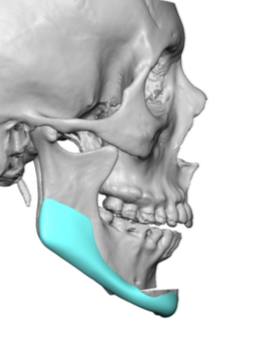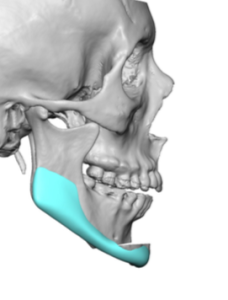Background: One uncommon and not well known method of aesthetic jaw augmentation is a combined autologous-alloplastic approach. This combines the only aesthetic method of a jaw osteotomy with jaw implants. This means a bony genioplasty for the front of the jaw and custom implants for the back of the jaw.
The indication for this type of jaw augmentation is when a significant horizontal chin advancement is needed. While modest amounts of horizontal chin augmentation can be achieved by an implant there are limitations to what can be achieved with that approach. Because the soft tissue chin pad must be elevated off of the bone and if an implant is then placed on it, the soft tissue chin pad must be pulled back over it during closure. In the horizontal dimension this is not assured when large augmentations are desired. (10mms or greater) In my experience once 10mms or more of horizontal chin augmentation is needed it may be difficult or impossible on getting the soft tissue chin pad pulled back over it in a satisfactory manner. This can be overcome by a classic sliding genioplasty which does not have this soft tissue restriction as it naturally follows the bone forward due to its retained inferior soft tissue attachments.
With an autologous sliding genioplasty the jawline augmentation behind it can be done with implants. But it will require custom implant designs to create the desired jaw angle effect and have the implant come forward to blend into the relocated chin bone for a complete jawline augmentation.
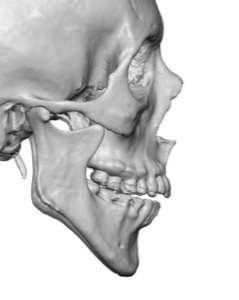

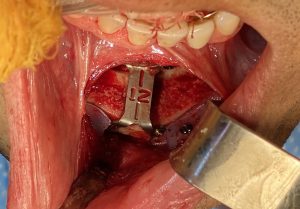

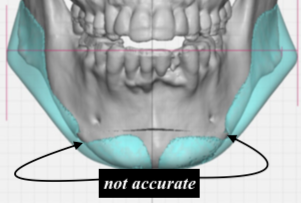
Case Highlights:
1) Significant horizontal lengthening of the chin is best done by a sliding genioplasty anteriorly and using custom implants to complete the lower jaw augmentation.
2) Preoperative computer designing is needed to make the repositioned chin bone and implant fit together for a unified jawline look.
3) While computer designing makes it look easy to put the two jaw augmentation concepts together, in actual surgery it is always a bit more difficult than it diagrammatically appears.
Dr. Barry Eppley
Indianapolis, Indiana

